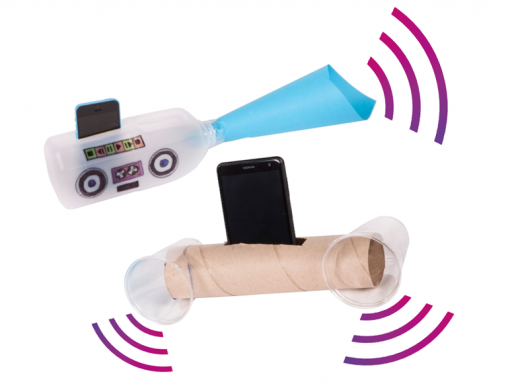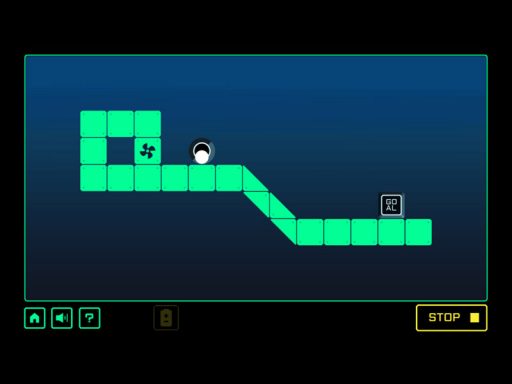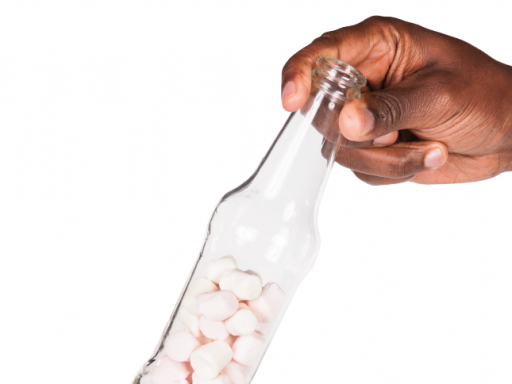The simple pinball machine in this activity is made from a cardboard box, with ice lolly sticks as the flippers. It provides a great opportunity to explore the science of forces and motion. Game on!
Printable downloads
Follow these steps…
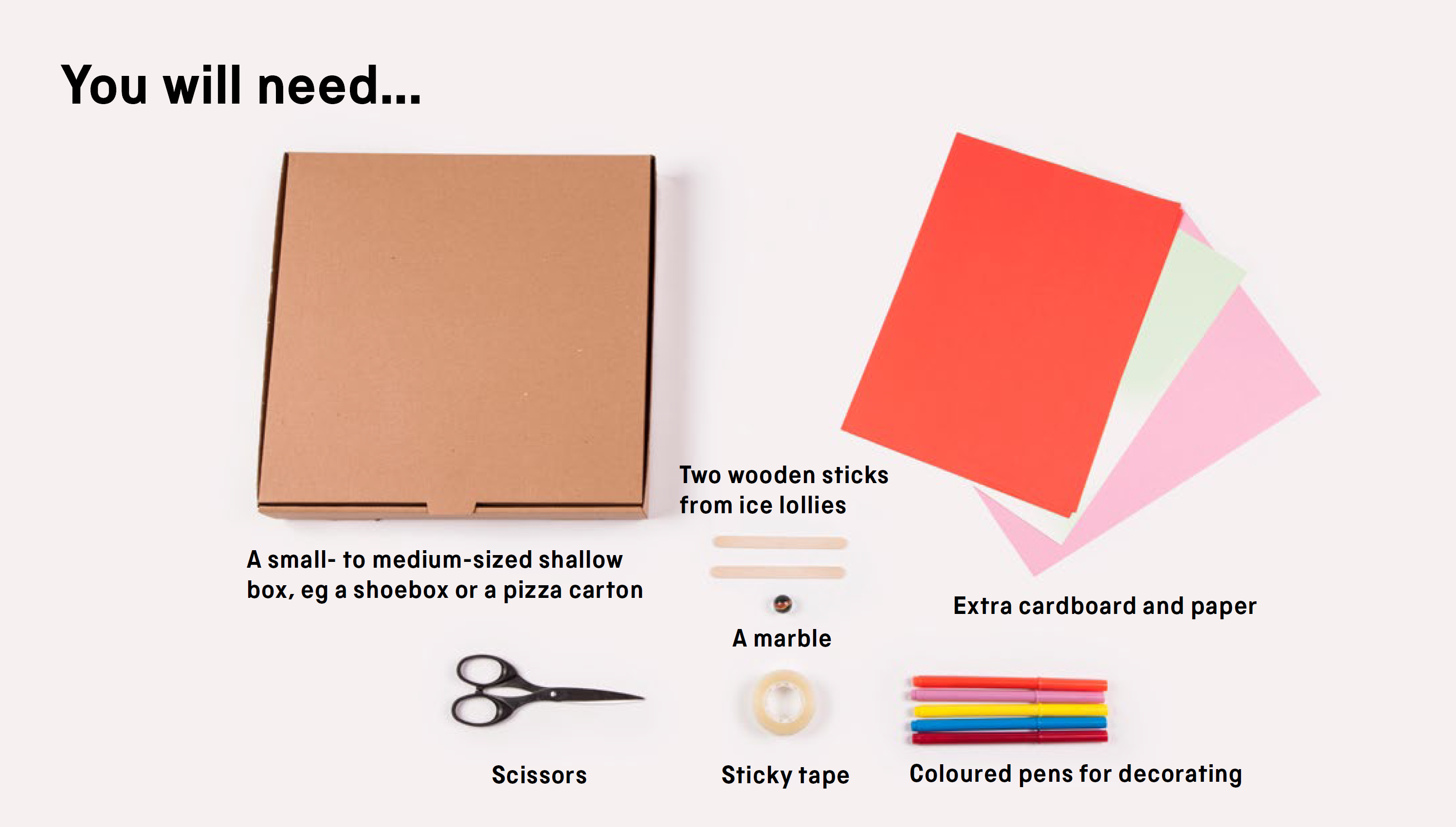
-
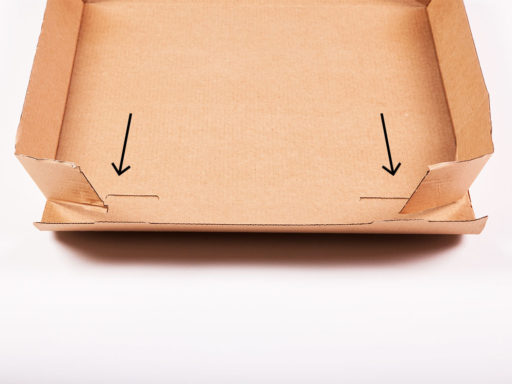 Unfold one end of your box so that the two flaps come free.
Unfold one end of your box so that the two flaps come free. -
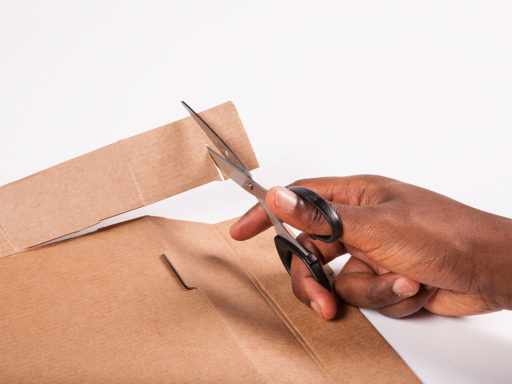 Cut a small slit in each flap, going roughly halfway across.
Cut a small slit in each flap, going roughly halfway across. -
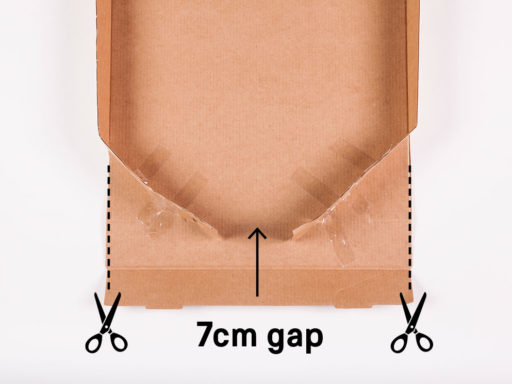 Angle the two flaps, like in the photo, and stick them down with tape, leaving a gap between them of about 7cm.
Angle the two flaps, like in the photo, and stick them down with tape, leaving a gap between them of about 7cm. -
 Slide the lolly sticks into the slits – these will be your pinball flippers.
Slide the lolly sticks into the slits – these will be your pinball flippers. -
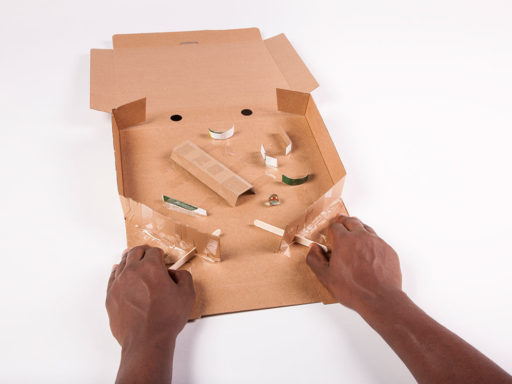 Make an obstacle course or maze on your board by adding curves, arches, ramps and tunnels. Use the lolly sticks as flippers to launch your marble onto the course.
Make an obstacle course or maze on your board by adding curves, arches, ramps and tunnels. Use the lolly sticks as flippers to launch your marble onto the course. -
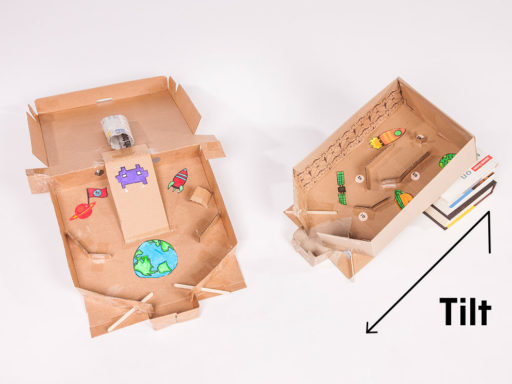 Get creative! Decorate your pinball machine and see how challenging you can make it by adding different obstacles. Lean your board on some books to help the marble roll.
Get creative! Decorate your pinball machine and see how challenging you can make it by adding different obstacles. Lean your board on some books to help the marble roll.
Think and talk about…
- What forces change the motion of the ball in your pinball machine?
- What do you think would happen if the box didn’t slope?
- Which parts of the pinball board are hardest to reach?
Investigate…
- How could you change your pinball machine to make it easier or more challenging?
- Investigate how bigger or smaller marbles work in your pinball machine.
- Can you find another way of launching the ball, perhaps with a spring?
Did you know?
English scientist Isaac Newton was the first to understand how forces affect motion – and he wrote down his findings as Newton’s laws.
What’s the science?
 There are three main forces that change the motion of the ball. First, the flipper starts the ball moving by applying a contact force directly to it. When the ball collides with the various elements within the pinball machine, contact forces change the ball’s direction of motion. The ball rolls because of friction between the bottom of the ball and the cardboard box; without that friction, the ball would simply slide. Finally, because the box is inclined (sloping), gravity slows the ball and then begins to speed it back down towards the flippers again.
There are three main forces that change the motion of the ball. First, the flipper starts the ball moving by applying a contact force directly to it. When the ball collides with the various elements within the pinball machine, contact forces change the ball’s direction of motion. The ball rolls because of friction between the bottom of the ball and the cardboard box; without that friction, the ball would simply slide. Finally, because the box is inclined (sloping), gravity slows the ball and then begins to speed it back down towards the flippers again.
Science in your world
 Riding a bicycle provides a great opportunity to think about contact forces, friction and gravity changing motion. Contact forces between your feet and the pedals turn the wheels, and friction between the wheels and the road starts your bicycle moving. Friction between the brakes and the wheel rim will slow down and stop your bicycle; gravity can do that too if you’re cycling uphill!
Riding a bicycle provides a great opportunity to think about contact forces, friction and gravity changing motion. Contact forces between your feet and the pedals turn the wheels, and friction between the wheels and the road starts your bicycle moving. Friction between the brakes and the wheel rim will slow down and stop your bicycle; gravity can do that too if you’re cycling uphill!

